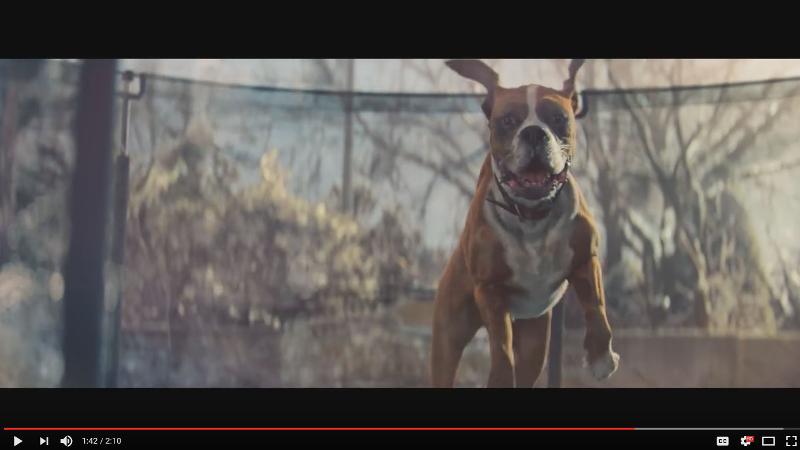
Once upon a time Christmas adverts were all about television, radio, print and billboards. Now they are multi-layered extravaganzas competing to get the most social media shares.
QUT Creative Advertising lecturer Michael Klaehn said Christmas ad campaigns are now hotly anticipated and on par with Super Bowl ads in terms of creativity, money spent and the use of celebrity star power and award-winning directors.
“The best ads generate an emotional response and many also employ humour. The Harvey Nichols ‘Sorry, I Spent It On Myself’ campaign from 2013 has become one of the most awarded campaigns ever and demonstrates why brands spend so much on their Christmas message,” Mr Klaehn said.
“The 2016 John Lewis Christmas #BusterTheBoxer ad is one of the hottest ads in town…the UK department store is famous for its festive campaigns that embed its brand into the hearts of customers using humour and ‘feel good’ storylines. This latest ad has had more than 21 million views on YouTube so far.
‘Another clever one this year is Summer Wonderland #AirNZXmas which stars Ronan Keating and young New Zealand actor Julian Dennison giving us a song for the Southern Hemisphere.
“Social media is now mainstream and absolutely integral to any advertising campaign where the ultimate goal for a brand is to be top of mind with customers. Social media can also target particular audiences in a very selective and successful way.
“Old-school mass media is still incredibly effective but social media organic growth doesn’t happen anymore without investment in pre-campaign roll-out advertising to whet the appetite which is why YouTube videos are preceded by ads and companies pay extra to have ads you cannot skip.”
Mr Klaehn said regardless of other mediums used, campaigns now live on via the internet which further spreads the message.
“The Christmas advert has become an art form. This year Swedish clothing giant H&M enlisted Wes Anderson, director of the Academy Award-winning film The Grand Budapest Hotel, to create mini-film Come Together starring Adrien Brody. It barely references H&M at all but within days was generating news stories, social media buzz and millions of hits.
“These adverts tell a deeper story and people expect so much more. They now want to know the name of the cow that gave us the milk. These ads don’t have to conform to 30 seconds or even a minute anymore, if they can keep your interest and communicate the message, then great.
“Brands are employing comedians and actors for voice overs while Hugo Guinness, co-writer of The Grand Budapest Hotel, wrote the Christmas ad for luxury British bag and accessories label Mulberry.
“Stephen Fry voices Santa Forgot from Alzheimer’s Research UK and Marks and Spencer have given us a super-stylish and efficient Mrs Claus for whom they have created an entire storyline with website features on her ‘life’.”
Mr Klaehn said the 2015 ad for Sainsbury’s has had more than 33 million views. It featured children’s book character Mog in collaboration with author and illustrator Judith Kerr who was interviewed in a ‘behind the scenes’ making of the advert, which in turn attracted one million-plus viewers.
“Closer to home, the 2016 Myer Christmas Film, as they call it, brings back the hugely successful characters from last year – Angel, Elf, Mouse and Reindeer,” he said.
“It was produced by Britain’s Aardman Animations, the four-time Oscar-winning studio behind Wallace & Gromit, Shaun the Sheep and more. So far it has had almost one million views; close to twice as many as last year.
“David Jones, meanwhile, has an ad starring Cate Blanchett, so it’s gone for star power but it doesn’t seem to be getting the same type of traction on social media platforms.”
Mr Klaehn said sometimes a brand can be too clever or obscure. The Apple Christmas ad, Frankie’s Holiday, with Frankenstein using his iPhone to record and share a Christmas carol, for example, has divided opinions.
“The Apple Christmas adverts star Brad Garrett from Everybody Loves Raymond and it has been labelled both weird and heart-warming,” Mr Klaehn said.
“Then there is the Christmas advert from McDonalds UK which has people scratching their heads over a doll called Juliette. It has been described as bizarre and weird while one person commented it was more like an ad for Tinder.”
Mr Klaehn said brands commonly produced sneak previews and teasers to generate interest.
“In the UK Aldi spent weeks teasing shoppers with a character called Kevin the Carrot which is voiced by acclaimed actor Jim Broadbent and turned out to be the star of its Christmas campaign,” he said.
“The Aldi Australia Christmas ad meanwhile is a little strange. It features the scary Tinkletons, an American family trying to prove their Christmas is better than ours.
“One thing is certain and that is the power of advertising is especially influential at Christmas. The Japanese tradition of enjoying fried chicken on Christmas Day is a direct result of a 1974 Christmas marketing campaign ‘Kurisumasu ni wa kentakkii!’(Kentucky for Christmas!) by KFC.”
Media contact:
Amanda Weaver, QUT Media, 07 3138 1841, amanda.weaver@qut.edu.au
After hours: Rose Trapnell, 0407 585 901, media@qut.edu.au


